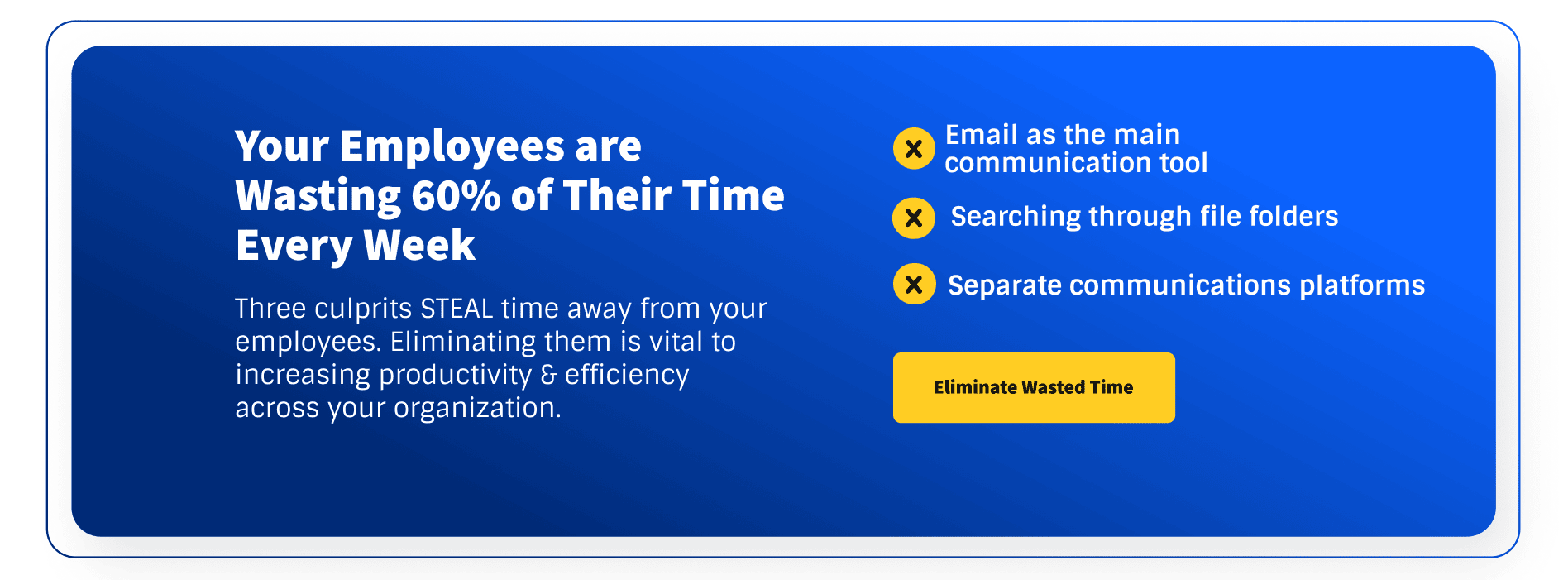How Unified Communications is Fueling Team Collaboration and Business Innovation

One of the most pressing and universal challenges in business today is communicating effectively. No matter what industry you're in, your success depends on your ability to relay messages internally, to vendors/partners and to your customers. Misunderstandings and lost information are incredibly costly to today's organizations, with experts estimating the impact of miscommunication in the US and UK at $37 billion each year.
While the science of effective business communications isn't simple, it's important to avoid underestimating the value of the right communication technology. Today's cloud-based Unified Communications (UC) tools aren't just an effective way to prevent lost voicemail or phone system outages. They're a means to integrate your company's communications across platforms into a single system that's easy for your employees to use with confidence. Unified Communications can also be simple to manage and maintain with the help of a quality vendor.
Well-designed, unified tools for communication are taking team collaborations to new heights, expanding the possibilities for how organizations work together locally and remotely.
Unified Communications Tools Make Global Communications Easy
Montgomery College is an example of an organization with common barriers to effective collaboration between stakeholders. With 60,0000 students and 3 campus locations, Montgomery's communication tools needed to bring together administrators, faculty, and students, while preparing the educational facility to adopt new technologies and scale.
While Montgomery's case is certainly unique, many of their challenges around people, place, and communications are not. During the College's Unified Communications design, a few key project objectives included unlocking the ability to:
- Provide seamless communications for faculty who teach at multiple locations
- Fielding cost-effective communications access for a part-time workforce
- Achieving a centralized communications infrastructure for 3 campus locations
- Developing ways to engage a tech-savvy student body from any device or location
Montgomery College was also balancing a need for extreme reliability and quality, as well as requirements for a seamless implementation.
Key Collaboration Benefits for Montgomery College
In partnership with Atlantech Online and Broadsoft, Montgomery College was able to develop a unified communications solution custom-designed for their highly distributed, mobile workforce and student body. Montgomery College unlocked some key communication benefits with Unified Communications, including:
- A comprehensive platform for a broad range of communication tools, allowing centralized management of VoIP, instant messaging, HD video calling and conferencing, contact center, file sharing, and mobile integration.
- True mobility and a mobile-first Unified Communications experience allowing users to access communications via desktops, laptops, smartphones, and tablet devices.
- The ability to quickly and easily push need-to-know information to members of the workforce and student body, including personalized reminders and alerts.
Montgomery College is not unique among modern organizations facing similarly steep challenges, a mobile or remote workforce, and compliance requirements. Read on to understand the potential impact of Unified Communications adoption on how your organization communicates.
Why Unified Communications is the Secret Ingredient to Better Business
1. Dynamic Team Collaboration
One of the biggest trends in business is dynamic teams, defined as diverse teams of individuals formed around a project instead of location or job title. One recent study revealed that 70 percent of today's workforce believe that they will work "wherever their skills are needed" at tomorrow's organizations, while 49 percent are on flexible teams today.
Your company may need to bring together the expertise of people at several global locations, hire short-term contractors, or collaborate with consultants. This model of flexibility across workplaces and traditional teams isn't supported particularly well by traditional communication tools such as phones and email inboxes.
Unified Communications tools like Team-One by Broadsoft support your need for dynamic team collaboration. Team-One allows organizations to quickly create virtual, cloud-based work spaces around projects for team chat, notes, task tracking and secure file-sharing. With sensitive access permissions, Team-One can also be used to support projects focused on sensitive data or confidential one-on-one communications.
To better support flexibility in how, when, and where your people collaborate, leading Unified Communications tools like Team-One can also be integrated with dozens of existing tools and platforms such as Google Drive and Salesforce.
2. Mobility First
With a mobile-first platform like Broadsoft, you can seamlessly support your employees' need for mobility. Unified Communications completely mitigates the need for employees to have both desk and mobile phone lines - your people can be reached at a single phone number regardless of where they are.
Instead of annoying out-of-office email reminders, your employees can be reached via any connected device; whether they're working from the office, their home office, or anywhere else in the world. With mobility first, your organization can support the needs of today's mobile-savvy workers.
3. Make Rich Communications Easy
How often have you sat through a meeting that was affected by "technical difficulties?" Or juggled multiple apps and your desktop phone in order to collaborate with a coworker? Unified Communications supports the way people really work and share information, which may encompass phones, email, instant messaging, video conferencing, file sharing, or desktop sharing.
Better yet, it mitigates the risk of technical difficulties by making rich communications easy to achieve for anyone, regardless of their technology background. With the basis of Unified Communications tools, including fiber-optic internet connectivity, organizations can also gain the ability to scale their communications apps up and down on an as-needed basis. As your people's need to adopt new apps for collaboration evolves, your vendor should be able to scale your services, add-ons, and bandwidth accordingly.
4. Better Customer Engagement
No customer likes to have to repeat themselves to a series of employees in order to resolve a relatively simple issue. Unified Communications doesn't just support internal collaboration; it can enable your organization to transform how you communicate with customers.
Today's leading Unified Communications solutions, like Broadsoft's CC-One for contact centers, integrate voice, email, web, chat, and social media into a central, cloud-based Voice, web, email. chat and social channels for better customer experiences. Through a unified client profile in your organization's customer relationship management (CRM) tool, your client-facing employees can gain a comprehensive picture of your customer's interaction with your organization across multiple channels. From the CSR's perspective, it's easier than ever to understand a client's needs from the moment they call or send a chat message. Meanwhile, your customers enjoy an experience that feels seamless.
The best options for customer engagement like CC-One don't just aggregate your customer's interaction data. It leverages this intelligence for predictive analytics, including dynamic call routing to the right customer service agent based on a client's predicted needs. As your organization grows and changes, CC-One can be used to support continual improvement of customer engagement via graphic call flow routing and easy-to-use interactive voice recognition (IVR) technologies.
5. Single Point of Truth
The cost of the time spent searching for information or waiting for information in business each year is staggering. While Unified Communications adoption is generally associated with cost savings on IT spend, it can also save money by supporting your organization's need for a single point of truth.
Your employees can benefit from a centralized messaging inbox where they can stay up-to-date on texts, voicemails, chat messages, and other communications instead of having to monitor 6-7 disparate apps throughout the day.
This single point of truth is likely to pay dividends in both internal productivity and external customer satisfaction metrics. The average employee checks their email 36 times per hour, and switching focus to check apps can cause physiological stress symptoms such as heightened heart rate. Adopting Unified Communications tools could improve employee focus while reducing stress over missed messages or communications.
Empowering Your Business with Unified Communications
Organizations need simpler means of communicating with their employees and customers. Even if your company is scattered at dozens of locations around the globe, it's possible to unlock seamless, centrally managed platforms for communications that make collaboration easy. By unifying your communication apps into a single, cloud-based ecosystem, you can achieve easier communications across platforms, regardless of location.
Making the switch to Unified Communications is often far more cost-effective than organizations think. To learn more about your company's potential for globally-integrated cloud-based communications and receive a complimentary, no-obligation price quote, contact Atlantech Online today.


